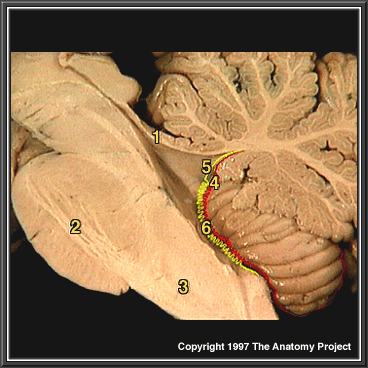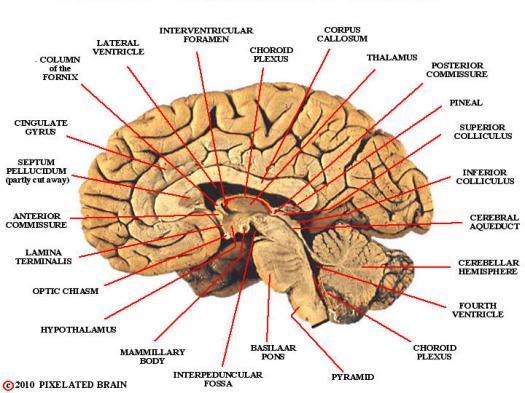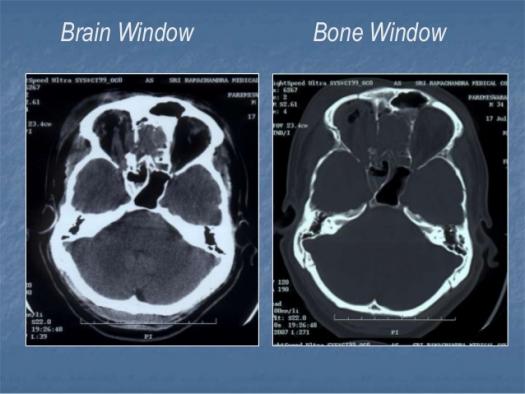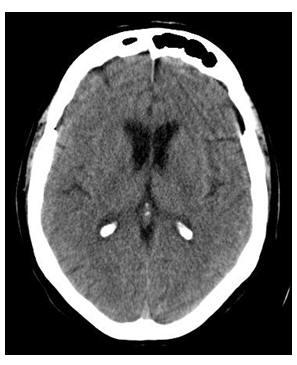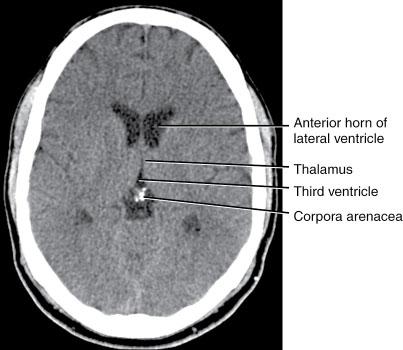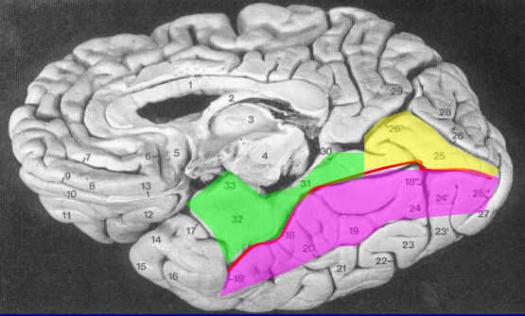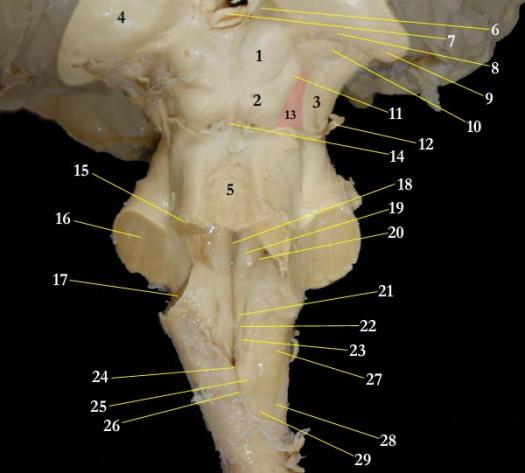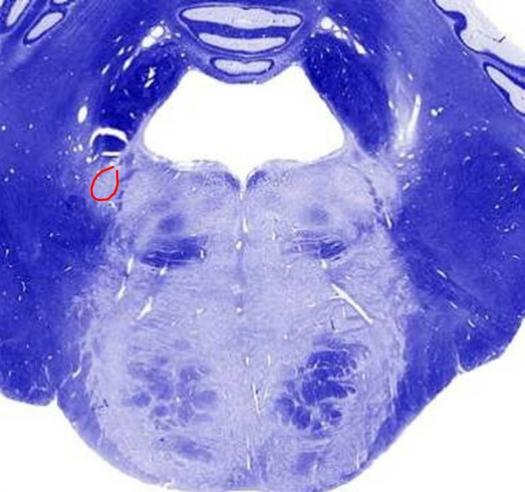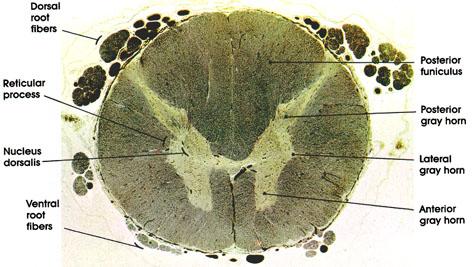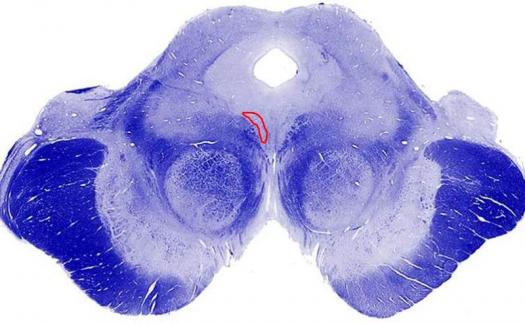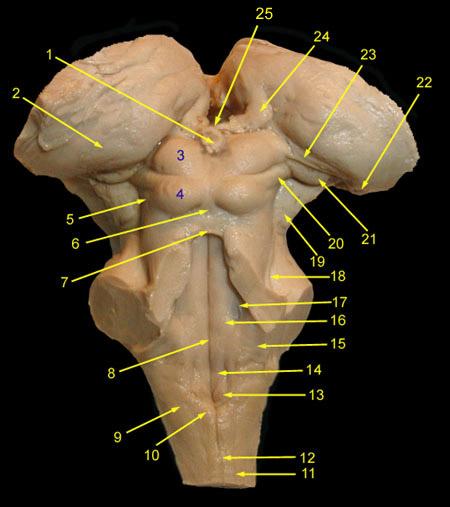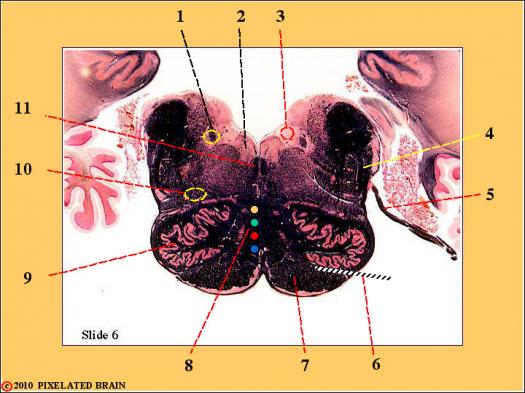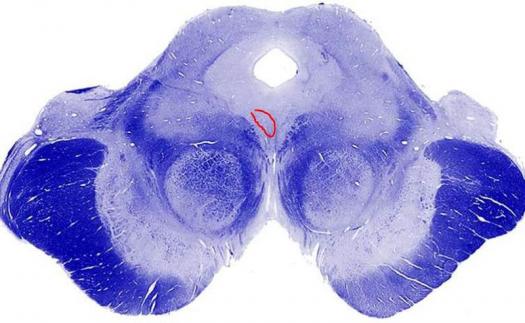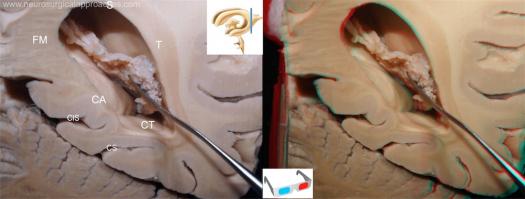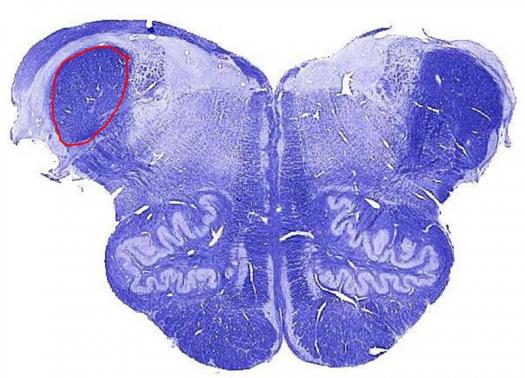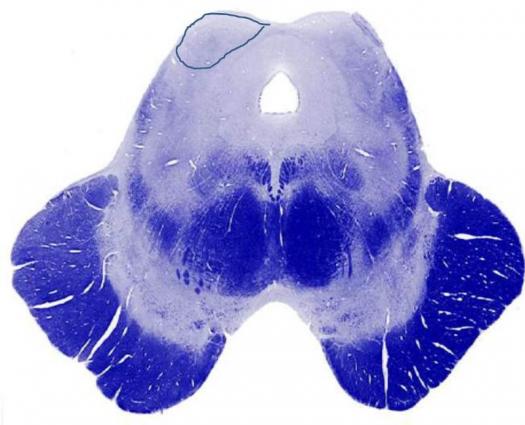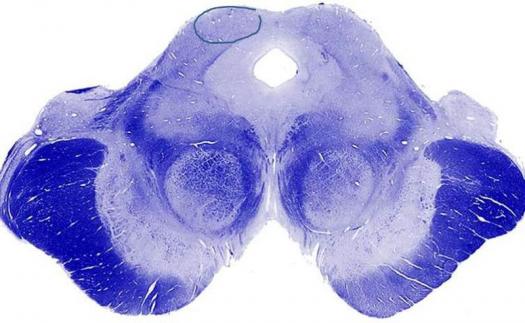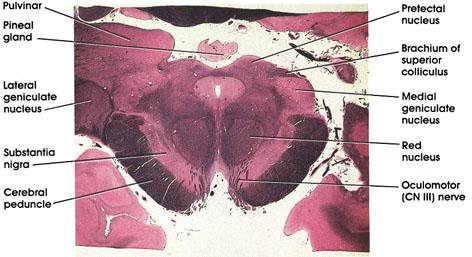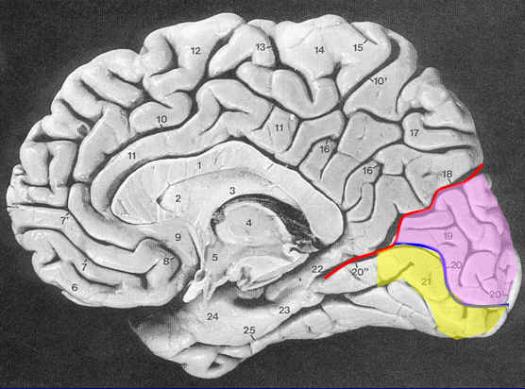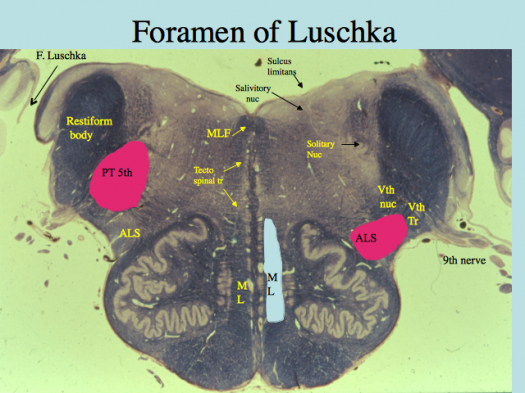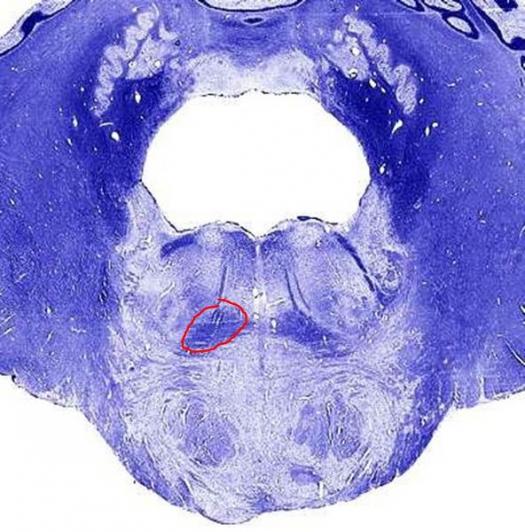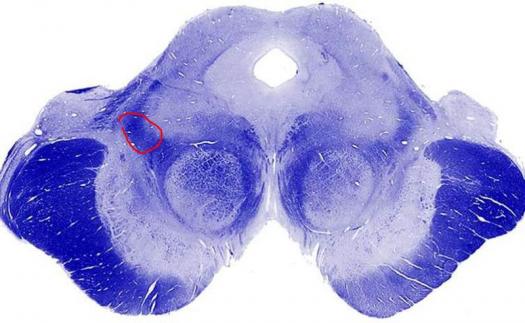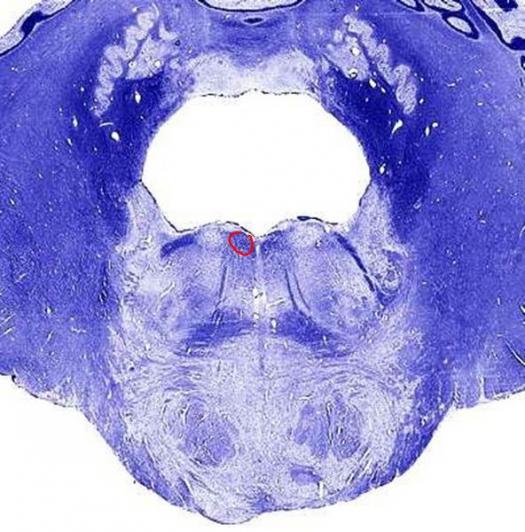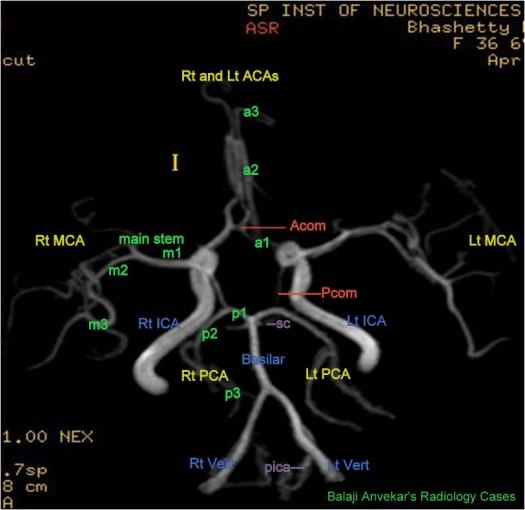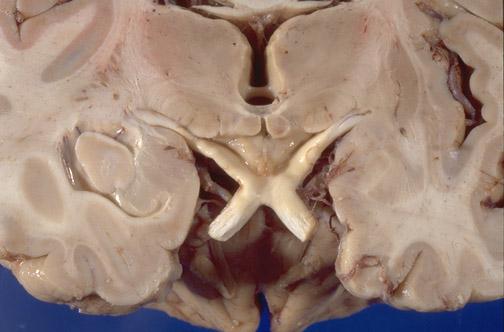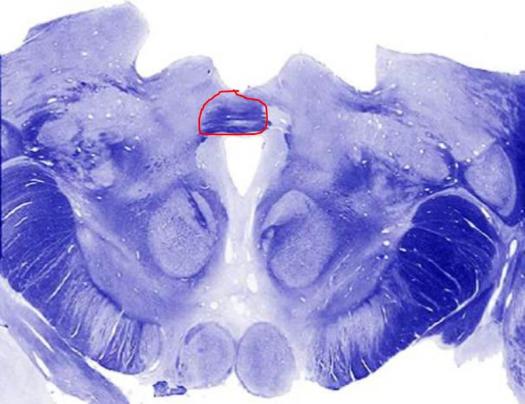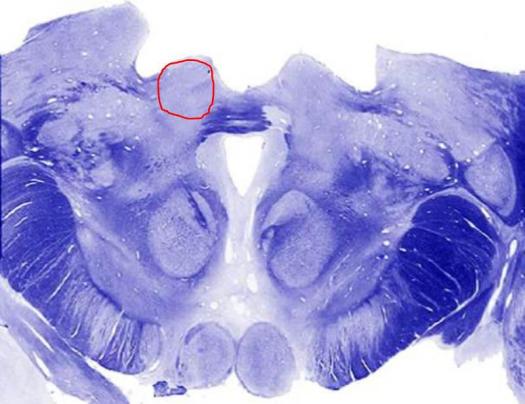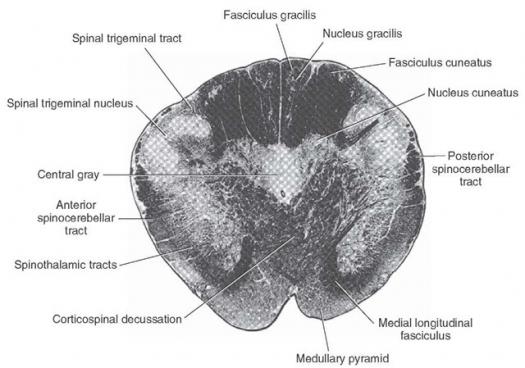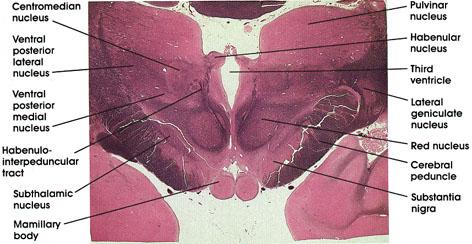SCID 251 - Lab Exam-1 Tutorial
(6).webp)
Questions and Answers
- 1.
Make sure you know No. 1
- 2.
Make sure you know both commissures.
Explanation
The explanation for the given correct answer is that the statement is referring to the need for understanding both the anterior (ant) and posterior (post) commissures. Commissures are bundles of nerve fibers that connect corresponding areas of the brain's left and right hemispheres. By knowing both the ant and post commissures, one can have a comprehensive understanding of the connections and communication between different brain regions.Rate this question:
- 3.
Make sure you know the type of imaging and window
Explanation
The correct answer is CT bone window (Rt.). This means that the imaging technique used is CT (computed tomography) and the specific window setting used is the bone window on the right side. CT scans are commonly used to visualize bones and the bone window setting enhances the visibility of bone structures. The "Rt." indicates that the window setting is applied to the right side of the image.Rate this question:
- 4.
What are in the lateral ventricles?
Explanation
The lateral ventricles contain calcified choroid plexus. The choroid plexus is responsible for producing cerebrospinal fluid (CSF) in the brain. Calcification of the choroid plexus occurs as a result of aging or certain medical conditions. This calcification can be seen on imaging studies such as CT scans or MRIs. It is important to note that calcification of the choroid plexus is a normal finding in older individuals and does not typically cause any symptoms or health problems.Rate this question:
- 5.
Do you know the white spot in the CT?
Explanation
The white spot in the CT scan refers to a calcified pineal gland. The pineal gland is a small endocrine gland located in the brain. It is responsible for producing melatonin, a hormone that regulates sleep-wake cycles. Sometimes, the pineal gland can become calcified, meaning that calcium deposits form within it. This calcification can appear as a white spot on a CT scan. Calcification of the pineal gland is a common finding and is usually considered a normal variant, especially in older individuals. It is generally not associated with any symptoms or health concerns.Rate this question:
- 6.
What is the sulcus (Red line)?
Explanation
The sulcus (red line) refers to the callateral sulcus. The callateral sulcus is a prominent groove that is located on the lateral surface of the brain. It separates the frontal and parietal lobes from the temporal lobe. This sulcus plays a crucial role in the organization and processing of sensory information, particularly auditory information. It is involved in various cognitive functions such as language processing, memory, and attention.Rate this question:
- 7.
Make sure you know No. 15, 16, 17. (Also review other No.)
Explanation
The correct answer is Sup/mid/inf cerebellar peduncles. The cerebellar peduncles are a set of three paired bundles of nerve fibers that connect the cerebellum to the brainstem. The superior cerebellar peduncles connect the cerebellum to the midbrain, the middle cerebellar peduncles connect the cerebellum to the pons, and the inferior cerebellar peduncles connect the cerebellum to the medulla oblongata. These peduncles are important for transmitting information between the cerebellum and other parts of the central nervous system, allowing for coordination and control of movement.Rate this question:
- 8.
Identify. Make sure you know all CN V nuclei.
- 9.
Where is the Clarke's nucleus in the photo?
Explanation
The Clarke's nucleus is located in the dorsalis region of the photo.Rate this question:
- 10.
Identify. Make sure you know what level it locates.
Explanation
The oculomotor nucleus is a structure located in the midbrain that is responsible for controlling the movement of the eye muscles. It is part of the oculomotor nerve, which innervates several muscles that control eye movements. The oculomotor nucleus is specifically involved in the movement of the superior, inferior, and medial rectus muscles, as well as the inferior oblique muscle. It is important to identify the oculomotor nucleus and know its location in order to understand its role in eye movement and related neurological functions.Rate this question:
- 11.
Identify 13, 14, 15, 16. Make sure you know 20, 21, 22, 23.
Explanation
The given answer correctly identifies the terms "hypoglossal trigine, vagal trigone, vestibular area, facial coll." as the ones that should be known. The question is asking the reader to identify these terms from a given list.Rate this question:
- 12.
Identify No. 3, and its functional classification. Make sure you know functional classification of other brainstem nuclei.
Explanation
The correct answer is the Dorsal motor nucleus of CN X (GVE). This nucleus is located in the medulla oblongata of the brainstem and is part of the parasympathetic nervous system. It contains preganglionic parasympathetic neurons that innervate the smooth muscles and glands of the thoracic and abdominal viscera. These neurons regulate various autonomic functions, such as digestion, heart rate, and respiratory rate. The Dorsal motor nucleus of CN X is classified as a general visceral efferent (GVE) nucleus, which means it controls involuntary motor functions.Rate this question:
- 13.
Identify. Make sure you know its location.
- 14.
Identify T. Make sure you know others: forceps major/minor, calcar avis, collateral trigone.
- 15.
Identify. Make sure you know all cerebellar peduncles.
- 16.
Identify. Make sure not confusing with sup colliculus.
Explanation
The correct answer is "Inf colliculus." The explanation for this answer is not available.Rate this question:
- 17.
Identify. Make sure not confusing with inf coll.
- 18.
Make sure you know LGB and MGB.
- 19.
Identify the YELLOW gyrus. Make sure you also know fusiform and parahippocampal gyri.
Explanation
The correct answer is Lingual gyrus. The lingual gyrus is a part of the occipital lobe in the brain and is involved in processing visual information, particularly in relation to color perception. It is located on the medial surface of the brain, just above the calcarine sulcus. The fusiform gyrus is located in the temporal lobe and is involved in face recognition, while the parahippocampal gyrus is involved in memory and spatial navigation.Rate this question:
- 20.
Make sure you know the location of F. Luschka and Magendie (esp. in wet specimen).
Explanation
The Foramen of Luschka is a small opening located on the lateral aspect of the fourth ventricle in the brain. It is named after the anatomist Hubert von Luschka. This foramen allows the cerebrospinal fluid (CSF) to flow from the fourth ventricle into the subarachnoid space surrounding the brain and spinal cord. It is important to know the location of the Foramen of Luschka, especially in wet specimen dissections, as it plays a crucial role in the circulation and drainage of CSF within the central nervous system.Rate this question:
- 21.
Identify. Make sure you know this structure at all levels.
- 22.
Identify. Also review lateral lemniscus and spinothalamic tract in the brainstem.
Explanation
The medial lemniscus is a pathway in the brainstem that carries sensory information, such as touch, vibration, and conscious proprioception, from the spinal cord to the thalamus. It is located in the brainstem, specifically in the medulla and pons. The lateral lemniscus, on the other hand, is involved in the processing of auditory information. The spinothalamic tract is responsible for transmitting pain, temperature, and crude touch sensations from the spinal cord to the thalamus. Therefore, the correct answer, "Medial lemniscus," is the only option that is related to the transmission of sensory information in the brainstem.Rate this question:
- 23.
Identify. Make sure you know this structure at all level.
- 24.
Review the arteries on MRI.
Explanation
The given answer lists various arteries that can be reviewed on an MRI, including the Superior Cerebellar Artery (SCA), Posterior Cerebral Artery (PCA), Posterior Inferior Cerebellar Artery (PICA), Anterior Inferior Cerebellar Artery (AICA), and others. These arteries are important in supplying blood to different parts of the brain, particularly the cerebellum. By reviewing these arteries on an MRI, one can assess their patency, detect any abnormalities or blockages, and evaluate the blood flow to the cerebellum and surrounding areas.Rate this question:
- 25.
Make sure you know the optic tract in the section.
- 26.
Identify. It is a commissural fiber.
Explanation
The given correct answer, "Posterior commissure," is the identification of a structure that is a commissural fiber. The posterior commissure is a bundle of nerve fibers located in the brain that connects the left and right sides of the brain. It plays a role in various functions such as visual processing and pupillary reflex.Rate this question:
- 27.
Identify this area in the midbrain.
Explanation
The pretectal area is a region located in the midbrain. It is involved in the control of pupillary light reflex and plays a crucial role in coordinating eye movements. This area receives input from the optic nerve and projects to other structures involved in visual processing. The pretectal area also has connections with the superior colliculus, which is responsible for orienting eye and head movements towards visual stimuli. Overall, the pretectal area is an important component of the visual system in the midbrain.Rate this question:
- 28.
Make sure you know the pyramidal decussation and sensory decussation.
Explanation
The pyramidal (corticospinal) decussation refers to the crossing over of nerve fibers in the medulla oblongata. It is an important anatomical structure in the central nervous system that is responsible for the contralateral control of voluntary movement. Nerve fibers from the motor cortex of one hemisphere cross over to the opposite side of the spinal cord, allowing for the coordination and control of movement on the opposite side of the body. This decussation is crucial for the precise and coordinated movements of the limbs and trunk.Rate this question:
- 29.
Make sure you know nuclei of the thalamus: VPL, VPM, Ant., DM etc.
Explanation
VPL (ventral posterior lateral nucleus) and VPM (ventral posterior medial nucleus) are nuclei of the thalamus. They are both part of the somatosensory pathway, receiving sensory information from the body and face, respectively. VPL receives input from the spinothalamic tract and the dorsal column-medial lemniscus pathway, relaying touch, pressure, and proprioceptive information from the body to the primary somatosensory cortex. VPM receives input from the trigeminal nerve and relays touch, pressure, and proprioceptive information from the face to the primary somatosensory cortex. These nuclei are important for processing and relaying sensory information to the cortex.Rate this question:
Quiz Review Timeline +
Our quizzes are rigorously reviewed, monitored and continuously updated by our expert board to maintain accuracy, relevance, and timeliness.
-
Current Version
-
Apr 19, 2023Quiz Edited by
ProProfs Editorial Team -
Nov 09, 2015Quiz Created by
Permphan
- Addiction Quizzes
- AIDS Quizzes
- Allergic Quizzes
- Allergy Quizzes
- Alzheimer Quizzes
- Anemia Quizzes
- Arthritis Quizzes
- Asthma Quizzes
- Bipolar Disorder Quizzes
- Burn Quizzes
- Cancer Quizzes
- Cerebral Palsy Quizzes
- COPD Quizzes
- Dengue Quizzes
- Depression Quizzes
- Diabetes Quizzes
- Disorder Quizzes
- Gastrointestinal Disease Quizzes
- Headache Quizzes
- Hypertension Quizzes
- Infectious Disease Quizzes
- Influenza Quizzes
- Insomnia Quizzes
- Lung Cancer Quizzes
- Lung Disease Quizzes
- Malaria Quizzes
- Neoplasia Quizzes
- Obesity Quizzes
- Osteoporosis Quizzes
- Pandemic Quizzes
- Personality Disorder Quizzes
- Pneumonia Quizzes
- Pulmonology Quizzes
- Sexually Transmitted Disease Quizzes
- Sinus Quizzes
- SLE Quizzes
- Stroke Quizzes
- Thyroid Disease Quizzes
- Tuberculosis Quizzes
- Ulcer Quizzes
- Viral Quizzes
 Back to top
Back to top



